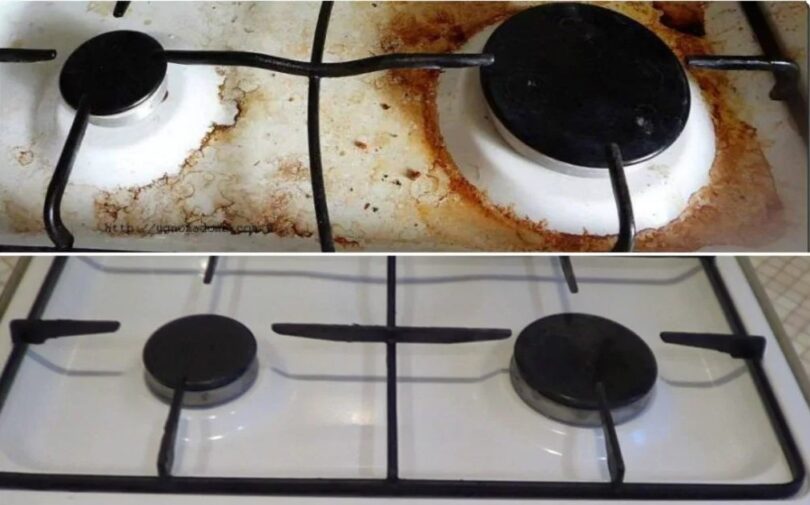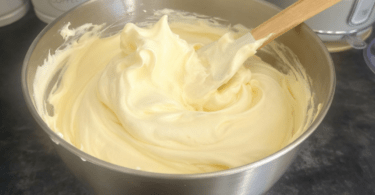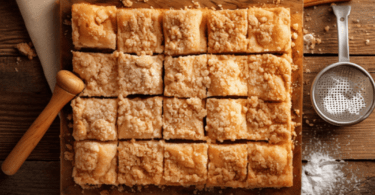Maintain the brilliance of your cooktop and ward off stains by mastering the art of cleaning a gas stovetop. With just a handful of uncomplicated ingredients and a modest amount of effort, you’ll be able to achieve remarkable results.
Gas stoves hold a special place in the hearts of both professional chefs and home cooks. The economical nature of gas and the precise control offered by the flames make them a favorite choice. Even the delightful option to char vegetables directly over an open flame is at your disposal. However, the culinary activity they facilitate can leave them quite soiled, making it crucial to understand the process of tidying up a gas stovetop.
How to Effectively Clean a Gas Stovetop
Maintaining the cleanliness of your gas stovetop and its grates need not be an arduous task if you stay on top of the maintenance routine. Gurskyi suggests that both commercial and natural cleansers can yield excellent results, catering to your personal preference. “By adhering to these guidelines and regularly cleaning your gas stovetop,” he asserts, “you can preserve its pristine appearance and operational efficiency for many years to come.”
To begin, prepare a sink filled with hot, soapy water. Allow the stove to cool down completely, then immerse the grates and burner caps in the sink, providing them a soak while you address the stovetop cleaning. (The subsequent steps will elaborate on the cleaning of gas stove grates.)
Engaging in a more comprehensive spring cleaning spree? While dish soap and water prove effective for a variety of household items, from walls to blinds, certain items are best spared from its touch. Here’s a rundown of things you should refrain from cleaning with dish soap.
Step 2: Apply the Chosen Cleanser
Sweep away any loose debris or food remnants using a soft microfiber cloth, then apply your chosen cleanser. Gurskyi advises that both natural and commercial cleansers prove their mettle. When dealing with natural options, he suggests spritzing the stovetop with a mixture of equal parts water and vinegar, or employing dish soap and water alongside a gentle sponge or cloth.
Should you opt for commercial cleansers, adhering to the provided instructions is paramount. “Thoroughly read the product instructions before using any commercial cleaner,” Gurskyi emphasizes. “Ensure the product is suitable for gas stovetops and follow the instructions diligently for optimal outcomes.”
Step 3: Gentle Scrubbing of the Stovetop
Irrespective of your choice between natural and commercial cleansers, allow the solution to sit for a few minutes, loosening dirt and grease. Subsequently, utilize a soft cloth or sponge to delicately scrub the stovetop surface. However, it’s advisable to avoid the abrasive side of the sponge (or consider a non-abrasive option like Scrub Daddy)—as it might inadvertently damage the stovetop surface.
For more stubborn stains, a razor blade scraper comes to the rescue. Unlike conventional razors for shaving or fabric maintenance, razor scrapers are designed to tackle stubbornly adhered food. Holding the tool at a 45-degree angle, cautiously scrape the stovetop surface. Exercise caution in this step, as undue force could result in surface scratches or damage.
Step 4: Rinse and Thoroughly Dry
Rinse the cloth or sponge with clean water, and proceed to wipe down the stovetop, gradually eliminating the cleanser. Periodically rinsing and wringing the cloth or sponge in the sink aids in removing soapy residue. Once all traces of grime and cleansers have been eradicated, conclude by drying and buffing the stovetop with a soft cloth.
Step 5: Cleansing of Grates and Burner Caps
Drain the sink holding the soaking grates and burner caps, then employ a soft brush or cloth to dislodge tenacious food residues. If lingering grime persists, the razor blade scraper can be employed on the grates. Alternatively, create a paste using baking soda and water, employing it for scrubbing purposes. Thoroughly rinse and dry the grates and burner caps before reinstalling them onto the stove.
With your stove now sparkling and your sink free, you might be interested in learning how to maintain the gleam of a stainless steel sink.
Effective Strategies for Sustaining a Clean Gas Stovetop:
- Having mastered the technique for cleaning a gas stovetop, your kitchen appliance is now spotless and primed for the next culinary venture. However, maintaining the tidiness of your gas stove demands minimal effort. Gurskyi emphasizes the significance of promptly addressing splatters and grease.
- “Should you spill something on the stovetop while cooking, attend to it immediately,” he advises. “This prevents the spill from solidifying and becoming harder to remove later on.”
- The frequency of cleaning your gas stovetop hinges on its usage, as Gurskyi clarifies. Regular cleaning, particularly after each use, thwarts the accumulation of food particles and the establishment of stubborn stains. Furthermore, he underscores that consistent upkeep can potentially prolong the lifespan of your gas stove.
- A regular cleaning regimen translates to daily upkeep, especially for avid cooks. Yet, even if your stove sees less frequent use, a swift wipe-down after each culinary endeavor is akin to the routine maintenance of your countertops post-meal preparation. And remember, whenever visible spills or stains make an appearance, it’s an opportune moment to clean your gas stovetop.
- Nonetheless, life occasionally leads us astray, so irrespective of your cooking frequency, Gurskyi recommends a comprehensive deep-clean of your stovetop—comprising grates and burners—at least once a month. Encompass this task within your monthly routine, along with other undertakings like thorough dishwasher cleaning and coffee maker descaling.
Expert Pointers to Bear in Mind
While mildly abrasive substances such as baking soda are effective for gas stovetop cleaning, refrain from employing excessively abrasive tools or harsh chemicals unsuited for stovetops. “Such practices can jeopardize the surface and introduce scratches, complicating future cleaning endeavors,” Gurskyi warns.
Furthermore, Gurskyi shares another professional cleaning insight. “Consider utilizing protective covers over your gas stovetop when it’s not in use,” he suggests. “This measure helps avert scratches, stains, and other forms of damage to the stovetop surface.”








